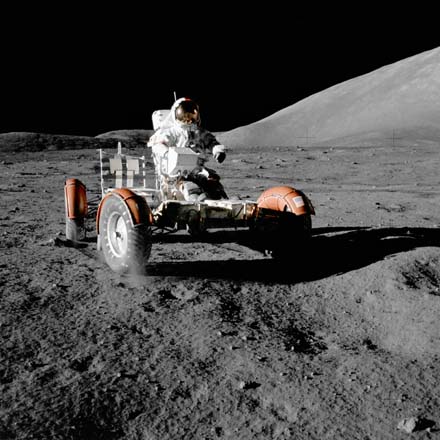 Zinc was used in the wheels and the batteries of the Moon Buggy. The Lunar Roving Vehicle (LRV) or Lunar Rover was a Zinc-Silver battery-powered four-wheeled rover used on the Moon in the last three missions of the American Apollo Program (15, 16, and 17) during 1971 and 1972.
Zinc was used in the wheels and the batteries of the Moon Buggy. The Lunar Roving Vehicle (LRV) or Lunar Rover was a Zinc-Silver battery-powered four-wheeled rover used on the Moon in the last three missions of the American Apollo Program (15, 16, and 17) during 1971 and 1972.
The wheels of the Lunar Roving Vehicle (LRV) were designed and manufactured so as to suit the surface and the environment of the moon. Made by General Motors Defence Research Laboratories in Santa Barbara, California, Ferenc Pavlics, the engineer, was given special recognition by NASA for developing the “resilient wheel” used tires made of Zinc-coated Steel Strands attached to the rim and discs of Aluminium.
Power was provided by two 36-volt Zinc – Silver – Potassium Hydroxide non-rechargeable batteries, yielding a range of 57 miles (92 kms). These were used to power the drive and steering motors and also a 36-volt utility outlet mounted on the front of the LRV to power the TV camera. The three Lunar Roving Vehicles still remain on the Moon.